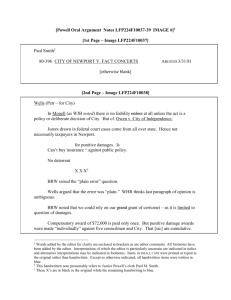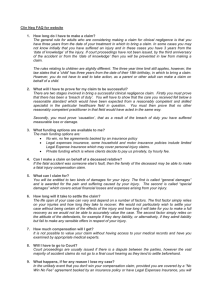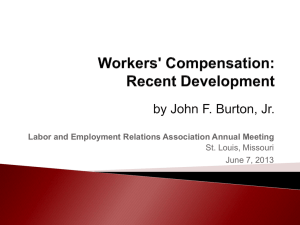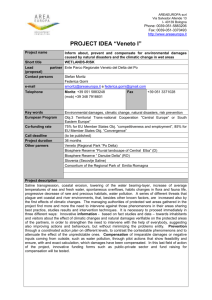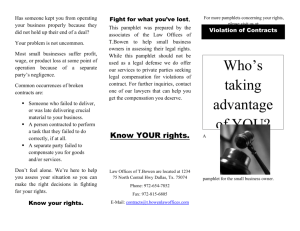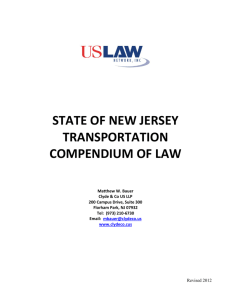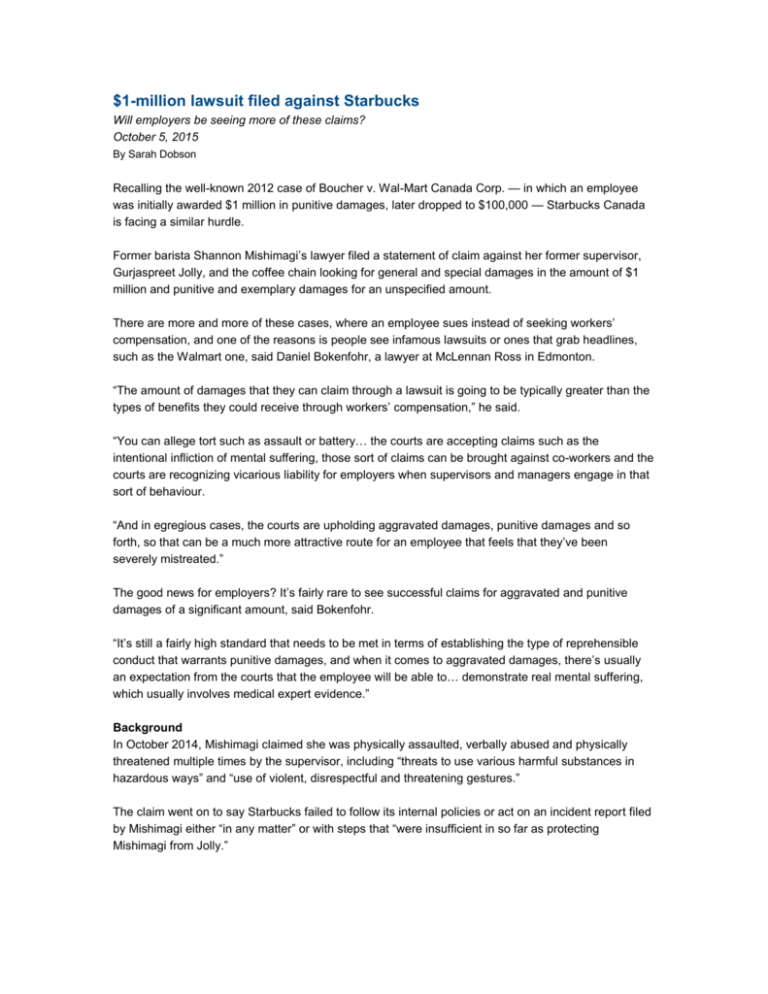
$1-million lawsuit filed against Starbucks
Will employers be seeing more of these claims?
October 5, 2015
By Sarah Dobson
Recalling the well-known 2012 case of Boucher v. Wal-Mart Canada Corp. — in which an employee
was initially awarded $1 million in punitive damages, later dropped to $100,000 — Starbucks Canada
is facing a similar hurdle.
Former barista Shannon Mishimagi’s lawyer filed a statement of claim against her former supervisor,
Gurjaspreet Jolly, and the coffee chain looking for general and special damages in the amount of $1
million and punitive and exemplary damages for an unspecified amount.
There are more and more of these cases, where an employee sues instead of seeking workers’
compensation, and one of the reasons is people see infamous lawsuits or ones that grab headlines,
such as the Walmart one, said Daniel Bokenfohr, a lawyer at McLennan Ross in Edmonton.
“The amount of damages that they can claim through a lawsuit is going to be typically greater than the
types of benefits they could receive through workers’ compensation,” he said.
“You can allege tort such as assault or battery… the courts are accepting claims such as the
intentional infliction of mental suffering, those sort of claims can be brought against co-workers and the
courts are recognizing vicarious liability for employers when supervisors and managers engage in that
sort of behaviour.
“And in egregious cases, the courts are upholding aggravated damages, punitive damages and so
forth, so that can be a much more attractive route for an employee that feels that they’ve been
severely mistreated.”
The good news for employers? It’s fairly rare to see successful claims for aggravated and punitive
damages of a significant amount, said Bokenfohr.
“It’s still a fairly high standard that needs to be met in terms of establishing the type of reprehensible
conduct that warrants punitive damages, and when it comes to aggravated damages, there’s usually
an expectation from the courts that the employee will be able to… demonstrate real mental suffering,
which usually involves medical expert evidence.”
Background
In October 2014, Mishimagi claimed she was physically assaulted, verbally abused and physically
threatened multiple times by the supervisor, including “threats to use various harmful substances in
hazardous ways” and “use of violent, disrespectful and threatening gestures.”
The claim went on to say Starbucks failed to follow its internal policies or act on an incident report filed
by Mishimagi either “in any matter” or with steps that “were insufficient in so far as protecting
Mishimagi from Jolly.”
“The plaintiff’s position is that it was a shoddy job, so not really investigating, not doing some of the
basic things that perhaps should be done like sending a copy of the report or reporting back to the
employee and saying… ‘This is what’s happening,’” said Saron Gebresellassi, Toronto-based litigation
lawyer representing Mishimagi.
In response, Starbucks said it is committed to providing a safe, supportive work environment.
“We take these claims very seriously as they are not consistent with our values and who we are as a
company. Starbucks has robust policies and procedures for investigating partner complaints, which
we have employed in this matter. While personal matters are confidential, we are prepared to
vigorously defend the reputation of our partners and our company in this case.”
The end of the claim cites Ontario’s Employment Standards Act, the Ontario Human Rights code,
Occupational Health and Safety Act and Negligence Act.
“There were breaches of multiple pieces of legislation in the province,” said Gebresellassi.
But it’s not clear exactly what it is they are claiming, said Carissa Tanzola, a lawyer at Sherrard Kuzz
in Toronto.
“What kind of harassment are we talking about — is this harassment based on prohibited grounds in
the human rights code or is this the bullying harassment that we see outlined in the Occupational
Health and Safety Act?”
Often, everything that can be claimed is claimed, especially when you’re dealing with a damage claim
for this amount, she said.
“Your damages come from a violation of the human rights code moreso than an Occupational Health
and Safety Act violation, as we see the case law develop. There can be punitive damages… but that’s
a little bit different when (we) see demands come in. The ones we worry about are the ones that have
allegations linked to the human rights code.”
Workers’ compensation
The claim is not really relying on the workers’ compensation statute, as that’s more for workers
physically injured on the job, said Gebresellassi.
“This is more dealing with issues of verbal violence, emotional violence… what we’re looking at is antiharassment, discrimination, creating a healthy and safe work environment,” she said. “The employer
may attempt to have this thrown out of court and say workers’ comp will cover it… But there’s definitely
breaches of the human rights legislation as well, and we’re prepared to bring that forth to the Human
Rights Tribunal to ensure that she actually does have a forum because the WSIB (Ontario’s Workplace
Safety and Insurance Board)… that’s about getting benefits when you’re injured, that’s not about
holding the employer liable for negligence or for verbal assault or physical assault.”
It’s an interesting area of the law that hasn’t been completely sorted out yet, according to Bokenfohr.
And one of the defences in claims relating to workplace harassment may be this is ultimately a type of
injury that was suffered at work and should be subject to coverage.
“The eligibility under workers’ compensation varies from province to province,” he said. “It gets to be a
tricky area of the law, though, because the… statutory bar against claims often doesn’t relate to
intentional conduct. So when you get into these cases where someone says, ‘I was assaulted at work,
I was intentionally harassed at work,’ I think there’s a good case to be made that workers’
compensation should not bar that type of claim because it’s not an accident and workers’
compensation was never designed to immunize workers or employers against intentional conduct like
that.
“It’s a dangerous proposition or a false comfort that employers would take if they think they can just
rely on workers’ compensation legislation to immunize them from those sort of claims.”
This is an emerging area in the Workplace Safety and Insurance Appeals Tribunal, said Tanzola.
“The act basically says that mental stress is not something that a person’s entitled to get compensation
for through the workplace insurance system.”
However, there is a provision that talks about a person being entitled to benefits for mental stress if
that is a reaction to something traumatic that’s happened unexpectedly at work, she said. And a recent
decision by the tribunal talked about how that section of the act is unconstitutional.
“They’ve opened it up to say, ‘It doesn’t have to be sudden or traumatic or acute, it could be something
that can happen over a long period of time.’ That decision is still being worked out through the case
laws but what that means is there is a larger opportunity, if I can put it that way, for these types of
claims to be covered under the WSIB or the workplace safety and insurance system. And if it is going
to be covered, then what Starbucks would do is say, ‘Well, look, any of these damages then have to go
through the WSIB; we pay into the WSIB system, like a no-fault insurance plan, and now you can’t sue
me.’”
Negligence
Mishimagi also claimed the company was negligent in failing to properly investigate Jolly’s
background, character and psychological state prior to his hiring.
“Part of the allegation is that there was a history of that kind of behaviour and... there are witnesses
that are prepared to corroborate the plaintiff’s version of events as well,” said Gebresellassi.
When it comes to issues of negligence, it’s not uncommon to see such allegations in these cases, said
Bokenfohr.
“Anytime there are red flags that were not investigated or were missed, that’s going to form part of the
negligence allegations and anytime there’s a failure by an employer to adhere to its own policies —
whether that’s relating to background checks or interview processes or... following its harassment
policies and so forth — that’s going to be something that’s going to form part of the claim as well, and
it’s very difficult for any employer to answer.”
From an employer perspective, it’s difficult to know sometimes who you’re getting, said Tanzola, even
after all the safeguards such as resumé and reference checks and interviews. On the other hand, there
can be pushback if someone feels an employer is doing too much checking, she said.
“I’m always inclined to remind employers that sometimes when something happens or is alleged to
have happened, there’s nothing you can do (to prevent) that. We think we’re hiring good people, we
provide training to these people but sometimes things still happen and our obligation as employers
isn’t (necessarily) to prevent all of that — although we’d like our efforts to prevent it, let me be clear —
but it’s to have the proper policies in place so that we’re dealing with it appropriately.”
© Copyright Canadian HR Reporter, Thomson Reuters Canada Limited. All rights reserved.
- See more at: http://www.hrreporter.com/articleview/25575-1-million-lawsuit-filed-againststarbucks#sthash.hiT0pTCw.dpuf

